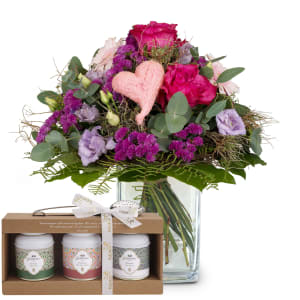Tea from Gottlieber
Which tea is called «gunpowder»? Which type of tea was picked by monkeys? And how is Moroccan tea made? Answers to these questions and more can be found here.

Gift set: green tea, white tea & fruit tea with tea infuser
This gift set from Gottlieber will delight tea lovers everywhere.
It includes green tea, white tea and fruit tea.

- The gunpowder green tea «Buddha's Darling» comes from the Chinese province of Zheijang. It comes in the shape of rolled leaves that develop a powerful aroma with a vibrant character in the cup.
- White tea is one of the most expensive tea varieties in the world. Gottlieber's «Miraculous Wellbeing Tea» is flavoured with red peppercorns and therefore has a slightly piquant flavour.

- In contrast, the «Fruit Revolution» tea mix (apple slices, hibiscus, orange peel, rose hips, sunflower blossom, peach and vanilla) is more aromatic and offers a unique taste sensation.
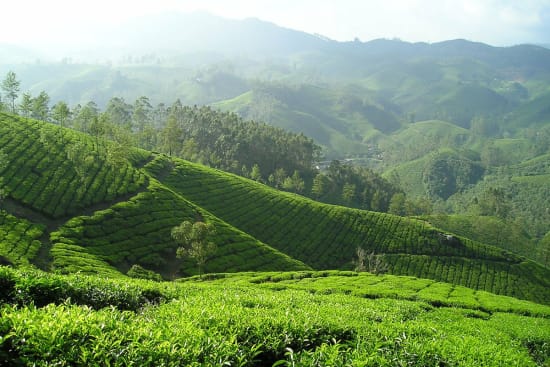
Black tea, green tea or white tea: what's the difference?
These teas differ mainly in the way they are prepared.
The freshly picked tea leaves undergo different preparation methods depending on the type of tea.
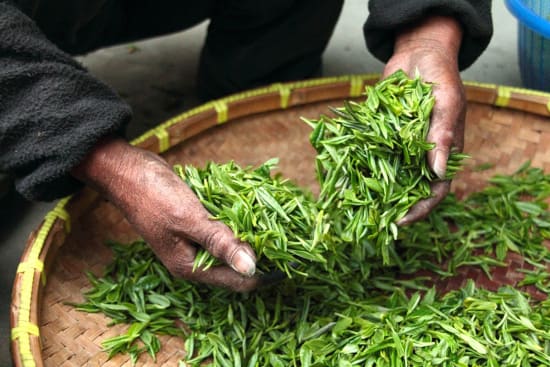
- In the case of black tea, the tea leaves, which are picked by hand, are left to wilt and are then rolled, fermented and dried. In comparison with the other tea types, black tea has the highest caffeine content.
- In the case of green tea, the tea leaves, which are picked by hand, are left to wilt and are then heated (roasted or steamed) rolled and dried. Green tea contains caffeine. However, this can vary enormously depending on the variety.

- In the case of white tea, the unopened buds, which are picked by hand, as well as the two finest tea leaves are gently wilted in the sunshine and then dried. White tea does contain caffeine, but considerably less than the other tea varieties.
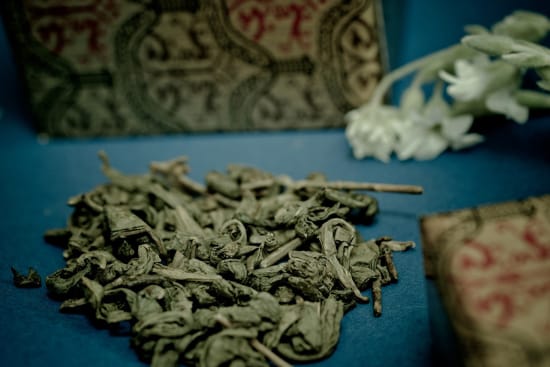
These teas are all made from the camellia tea plant. The two oldest varieties of tea plants are thea sinensis and thea assamica.
The latter produces strong dark tea, which is why its leaves are used primarily for black tea.
In contrast, the leaves of the thea sinensis plant produce a light,
bright tea with a strong aroma. That is why this tea bush is ideal for making green tea and white tea.
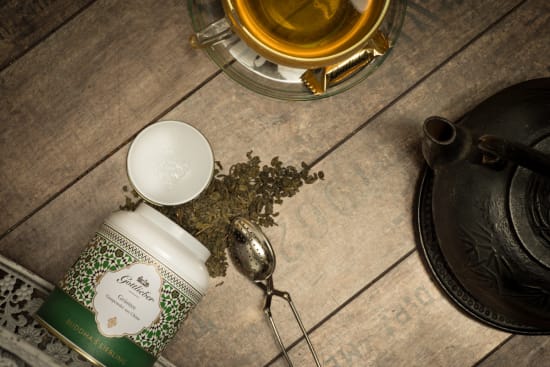
Green tea invigorates and reduces symptoms of stress
The history of green tea began many thousands of years ago when people first noticed that this tea was invigorating.
This fact alone goes to show that one of its most vital ingredients is caffeine.

Most of the health-giving properties of green tea are, however,
ascribed to the so-called catechins, which, for example, protect our cells from harmful UV light.
The amino acids in the tea leaves provide the flavour, theanine being the most important.
This works directly on the central nervous system and reduces the classic symptoms of stress without making you tired.
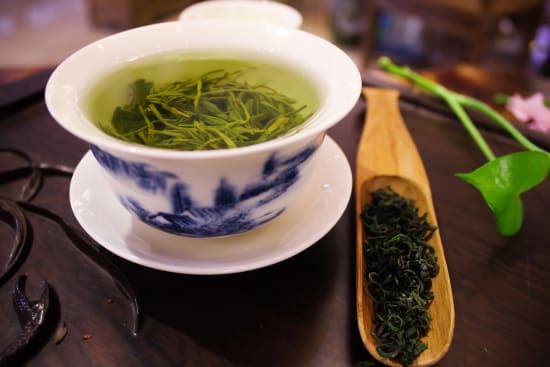
Moreover, green tea contains an absolute cocktail of beneficial vitamins and minerals.
This means that our teeth benefit from fluoride, our muscles from magnesium, our eyes from carotene and our muscles from a number of B vitamins.
It is hardly surprising that green tea is considered to be a special weapon in the armoury of health.
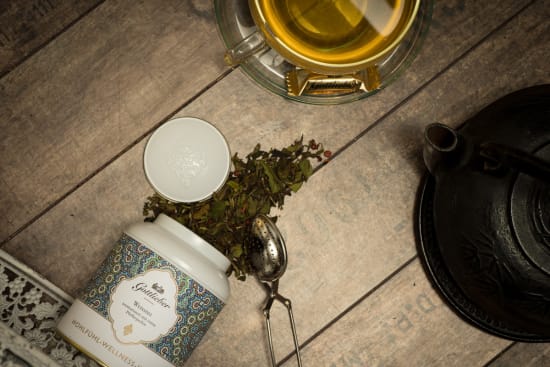
White tea stimulates and supports the immune system
Just like black or green tea, white tea contains caffeine. However, the concentration of caffeine is low.
This is why white tea has a stimulating effect but in a pleasantly gentle manner.
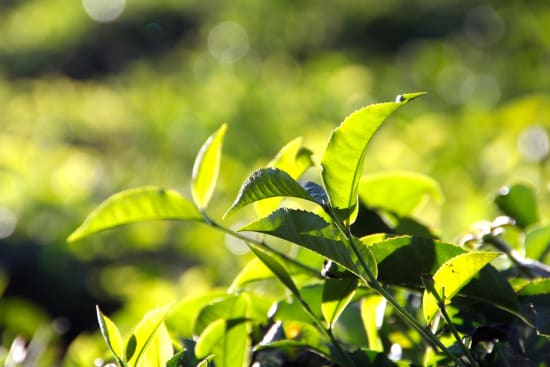
It also contains protective polyphenols. As radical catchers, they protect the cells of our bodies and our
immune systems against the harmful effects of UV radiation and pathogens, and they also encourage our metabolisms.
Moreover, the Chinese believe that white tea lowers blood pressure.
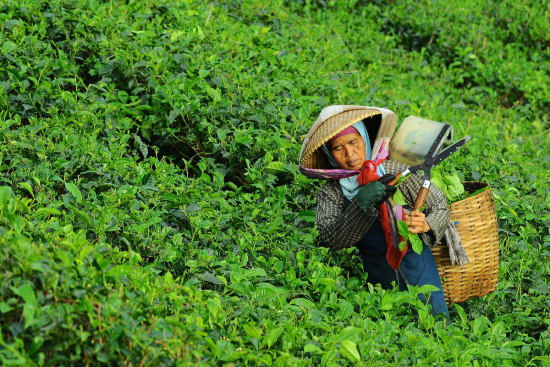
White tea is believed to be the noblest tea in the world. Only the unopened buds and sometimes the first two leaves are picked in spring to make this tea.
Since the leaves have not yet made any chlorophyll, white tea is deemed to be one of the mildest tea blends.
The buds and leaves are processed in a particularly delicate manner.
Once they have been picked, they are first wilted in the morning sunshine and then later in the shade.
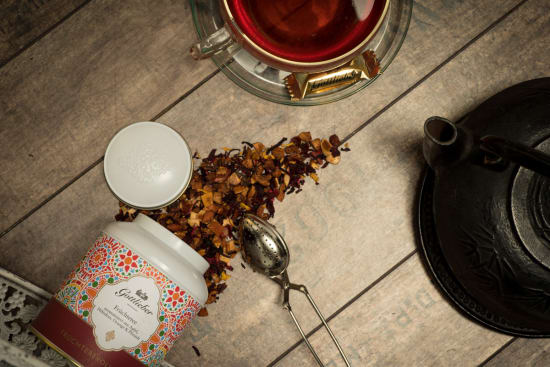
Fruit tea - tasty, fragrant and healthy too
You feel so wonderful after a cup of fruit tea!
This isn't just because of the delightful aroma and flavour, but is also due to the ingredients.
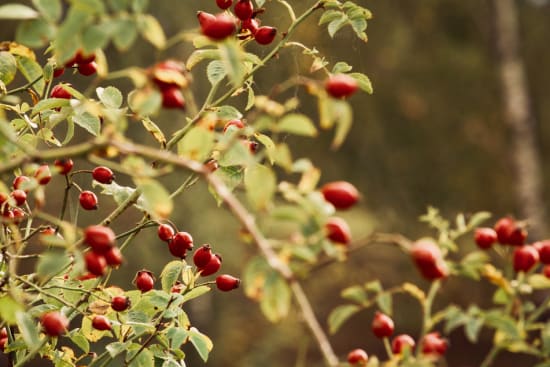
For example, hibiscus contains a high level of antioxidants that help the body defend itself against harmful free radicals.
Rose hips simply explode with vitamin C, and they also contain antioxidants as well as other vitamins and valuable minerals.
The healing properties of apples are legendary.
According to tradition, orange blossom has calming properties. And peaches are bursting with vitamin C that is good for our immune systems.

Conclusion:
depending on the mix, fruit teas provide adults and children with a dose of goodness and are free from caffeine.
They should therefore be seen as a healthy drink with a high vitamin content and can also be enjoyed cold as a refreshing and delicious thirst quencher.

Why is there a green tea called «gunpowder»?
It is called gunpowder because the leaves are rolled into little balls. They then look like little black pellets of gunpowder, which was also invented in China.
This rolling method is used either for dried green tea or for oolong tea. The blends available from Gottlieber are the gunpowder green tea variety.

The production of this tea type dates back to the Tang dynasty (618-907).
At that time, the leaves of the green tea plant were dehydrated, steamed, rolled by hand and then dried.
Today, gunpowder is still picked by hand and then roasted in a special procedure that prevents fermentation.
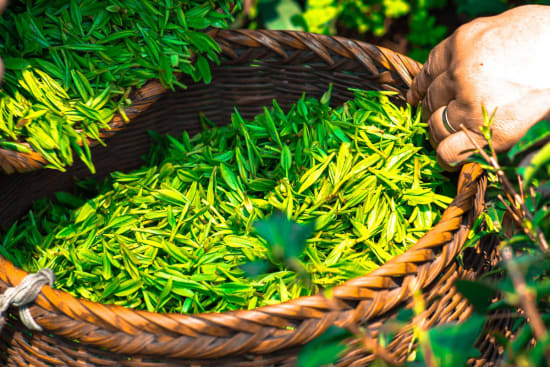
It is subsequently rolled by machine and packed after at least three drying processes.
By rolling, the leaves become less susceptible to damage and so retain their taste and aroma better.
In China, gunpowder is known as pearl tea.
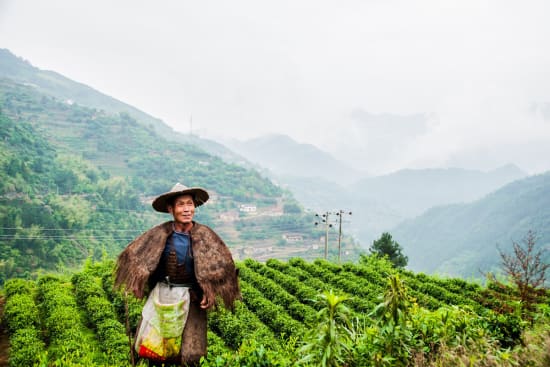
An emperor and chance brought us the tea
The legendary emperor Shennong ruled in China almost 5,000 years ago. He was a stickler for cleanliness and even had his water boiled before drinking it.
During a long journey, when the emperor had his water boiled under a tree, a light wind blew some leaves into the water. The water took on a light green tint and the steaming kettle started to give off a pleasing aroma.
The emperor tasted the drink and was delighted by it. He felt invigorated and refreshed by this strange concoction.
The tree was a tea bush and tea had been discovered.
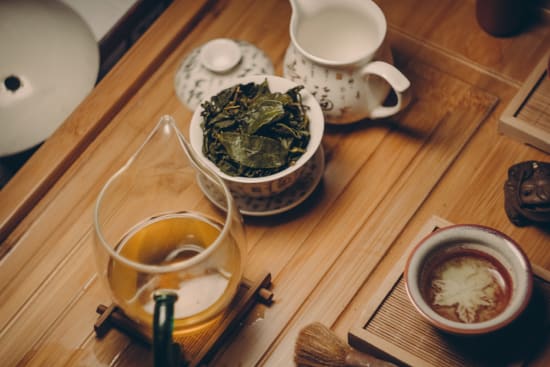
With regard to Shennong: he is not only famous for the discovery of tea.
History has it that he also taught his subjects about farming and that he investigated plants for their medicinal properties.

White tea – once picked by monkeys
White tea is believed to have originated in China in the 7th century.
Because it was so rare and tasted so delicious,
it was enjoyed exclusively by the emperor and was extremely popular, particularly during the Song dynasty (960-1279 A.D.).

At that time, white tea was generally drunk as powdered tea as this was the only way it could be preserved.
The emperor even had special officials who sent the tea directly to the emperor as soon as it had been harvested so that he could be served fresh tea too.
According to legend, monkeys were trained to pluck the very top buds off the high tea bushes. In Europe, white tea only became known in the 19th century.

Moroccan mint tea with gunpowder (recipe)
If you have ever been to Morocco, you will have come across the ubiquitous
and delicious sweet mint tea that you can find on every street corner. This is made from gunpowder.
Here is the recipe:
Ingredients for approx. 1 l tea:
4 sprigs of fresh mint (preferably Moroccan nana mint); 4 tsp Chinese gunpowder green tea; 1.2 l soft water; 10-12 sugar cubes.
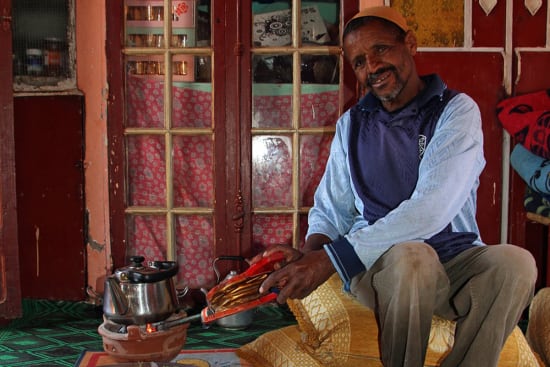
Method:
- Wash the mint, reserve 6 leaves.
- Measure the gunpowder into a teapot (with a strainer insert if possible).
- Boil the water and pour approx. 2 full glasses over the gunpowder and immediately tip away.
- Place the mint sprigs in the teapot; pour the remaining water, which is no longer boiling, over the gunpowder and mint. The mint has to be fully covered with hot water otherwise it will burn and become bitter.

- Add the sugar cubes, place the teapot on a small stove (stand with tea light to keep the tea warm).
- Leave the tea to brew for a maximum of 3 minutes.
- Fill one of the tea glasses with tea, holding the teapot as high as possible so that the stream of tea passes through the air. Pour the tea back into the teapot and repeat two or three times so that the flavour can develop fully.
- Divide the reserved mint leaves between the glasses, pour the tea over them and enjoy this delicious drink whilst it is still hot.
More loving & high-quality additional gifts
Gottlieber specialties
Here you will find the story of a woman who developed normal wafers into a speciality and find out what makes our cocoa almonds so special.
Chocolate from Maestrani
Why is chocolate good for morning grouchs? Who paid with cocoa beans? And why do ladybirds bring good luck? Answers to these and other questions can be found here.
Honey from Bee-Family
Want to learn more about an irresistible honey? To dive into the world of honey, honey hunters and bee transhumance and know how to store honey? Read here.
Tea from Gottlieber
Which tea is called «gunpowder»? Which type of tea was picked by monkeys? And how is Moroccan tea made? Answers to these questions and more can be found here.
Red wines Amarone and Ripasso by Albino Armani
Here more about our red wines: the Azienda Albino Armani, a wine made from dehydrated grapes, the «accident» called Amarone and a film that will make you dream.
Prosecco Albino Armani
When may a wine be labelled Prosecco? What is meant by Brut or Extra Dry? Who is Albino Armani? And what can dreams look like? Here you will find the answers.
Teddy bears
More about the «birth» and success story of the cute teddies as well as all kinds of information about teddy bear days, teddy bear records or teddy museums can be found here.
Avelines pralines - a melt-in-the-mouth treat
Are pralines your greatest pleasure? The ideal gift for special moments, a reward, an anti-stress remedy, or a bedtime snack? Then try our Avelines pralines, a premium treat of the finest quality.









